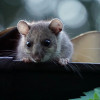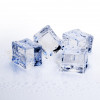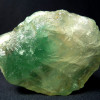Question
Do traces of ancient spices on utensils in Vietnam provide evidence for the origins of curry?
Answer
Chris Smith asked University of Cambridge palaeoanthropologist Emma Pomeroy...
Emma - Yes, I love curry too. Without wanting to be a bit of a boring scientist and say, 'well, what do we mean by curry?' I think it's actually important to start out by asking that.
Chris - Chicken tikka jalfrezi made just a little bit hotter with the pilau rice and a peshwari naan, please.
Emma - It is actually a term that we use to refer to cuisine from many different parts of the world, including the Caribbean, India, Southeast Asia, China. And it probably comes from the 17th century, and actually the British travelling out there, to those parts of the world, and trading and seeing food that was basically a sauce with spices containing meat and vegetables and just calling it all the same thing: a curry.
Chris - They call it our national dish these days, don't they? I think it is more popular than anything else, isn't it?
Emma - Indeed. And the fact that it's so widespread across many parts of the world, it makes this a really interesting question. So where did this kind of cuisine come from? So there's evidence from this site in Vietnam that you mentioned, it's from about 2000 years ago. It comes from samples from a sandstone slab that's probably been used for grinding spices down. And what they do is they take these samples of the starch grain, tiny particles within the plant cells, and they actually differ in their shape between different plants. So a palaeobotanist can look at those under the microscope and say to you whether this is evidence of a particular plant. And they found a whole range of different spices, including things like turmeric, ginger, galangal, sand ginger, things that we associate with being in a curry. And there was evidence that they'd actually been ground because the starch particles were damaged. So they're saying that perhaps this is some of the earliest evidence of curry.
Chris - Can it also, apart from obviously being interesting in telling us about what people must have been eating, can it tell us a bit about trade and that kind of thing? Because if you know that some of the things they can see are, say, not native, they must have come from somewhere else, that must be a connection to another bit of the Earth at the same time arguing there was trade going on. So it unlocks the door to an understanding of what humans were doing, trading, et cetera, in that era.
Emma - Absolutely. And this is one of the really interesting things that came out of the same study, that a lot of these spices that they were using don't come locally. They're actually coming hundreds of kilometres away over the sea. So it's not just telling us about the history of a food that we're particularly keen on, but it is telling us about those ancient trade networks. And I think it's also interesting to think about how people flavoured their food and how they enjoyed their food in the past, because perhaps we think of it as being quite utilitarian in past populations: you just ate to keep you going. And actually evidence for flavouring foods and adding things like mustard to foods goes back far further than you might think. So we've got evidence perhaps even as early as 40,000 years ago of people adding mustard seeds into their food, presumably to give it some flavour, because they're tiny little things so probably wouldn't have much other function.
Chris - But the standard of cuisine was also quite advanced from fairly early on, wasn't it? I remember about, almost 20 years ago, covering a story where researchers working in China uncovered a pot with noodles in it. And it was obviously the remains of someone's last meal. And I remember one commentator I interviewed about it said, these noodles are 2000 years older than Jesus!
Emma - Absolutely. It goes back even further. So at the site of Shanidar Cave where I work in Northern Iraqi Kurdistan, we have some evidence that Neanderthals were actually pounding particular pulses and grass seeds, soaking them perhaps to make them more digestible as well, and then mushing them together into some kind of paste which they were then cooking. So probably this kind of complex food processing goes back far further than perhaps we imagine, back to Shanidar 70,000 years ago, and we might see something that is not too different from some of the foods that perhaps we might eat today.










Comments
Add a comment